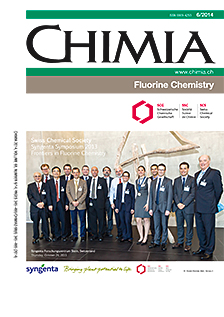Fluorine as a Control Element in Asymmetric Synthesis
DOI:
https://doi.org/10.2533/chimia.2014.378Keywords:
Asymmetric synthesis, Catalysis, Chirality, Fluorine, Gauche effectAbstract
The installation of fluorine atoms in reactants or catalysts has a dramatic impact on reactivity, regioselectivity and stereoselectivity. Several effects account for the modified stereochemical outcome of reactions with fluorinated versus non-fluorinated molecules. These effects are inherent to the specific properties of fluorine such as the size, the electronegativity, the chelation with metal cations, the hydrogen-bonding ability, the electrostatic and stereoelectronic interactions with neighbouring groups. The use of the effects of fluorine for a desirable goal in asymmetric synthesis is exemplified hereafter.Downloads
Published
2014-06-26
Issue
Section
Scientific Articles
License
Copyright (c) 2014 Swiss Chemical Society

This work is licensed under a Creative Commons Attribution-NonCommercial 4.0 International License.
How to Cite
[1]
V. Bizet, D. Cahard, Chimia 2014, 68, 378, DOI: 10.2533/chimia.2014.378.







